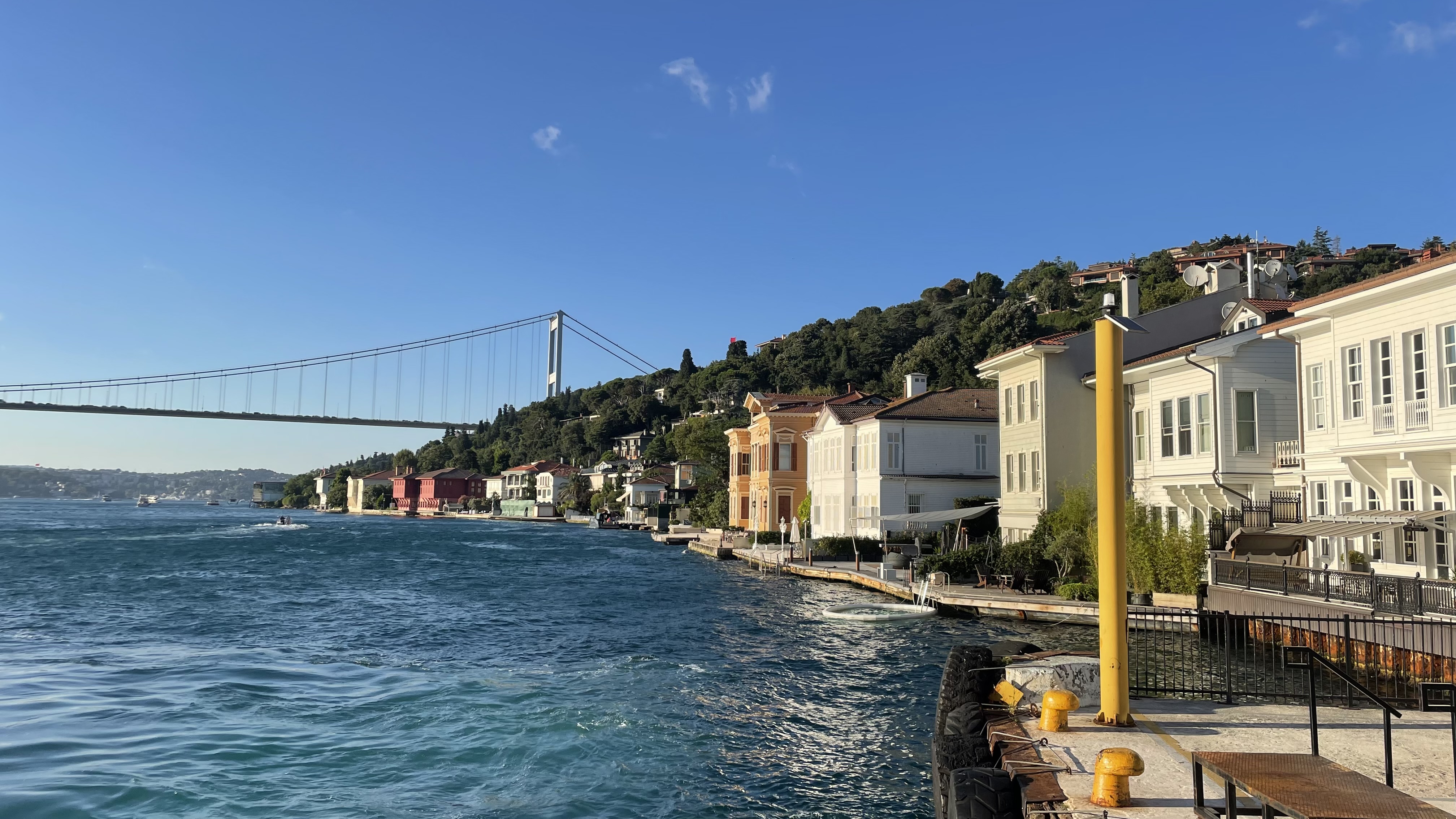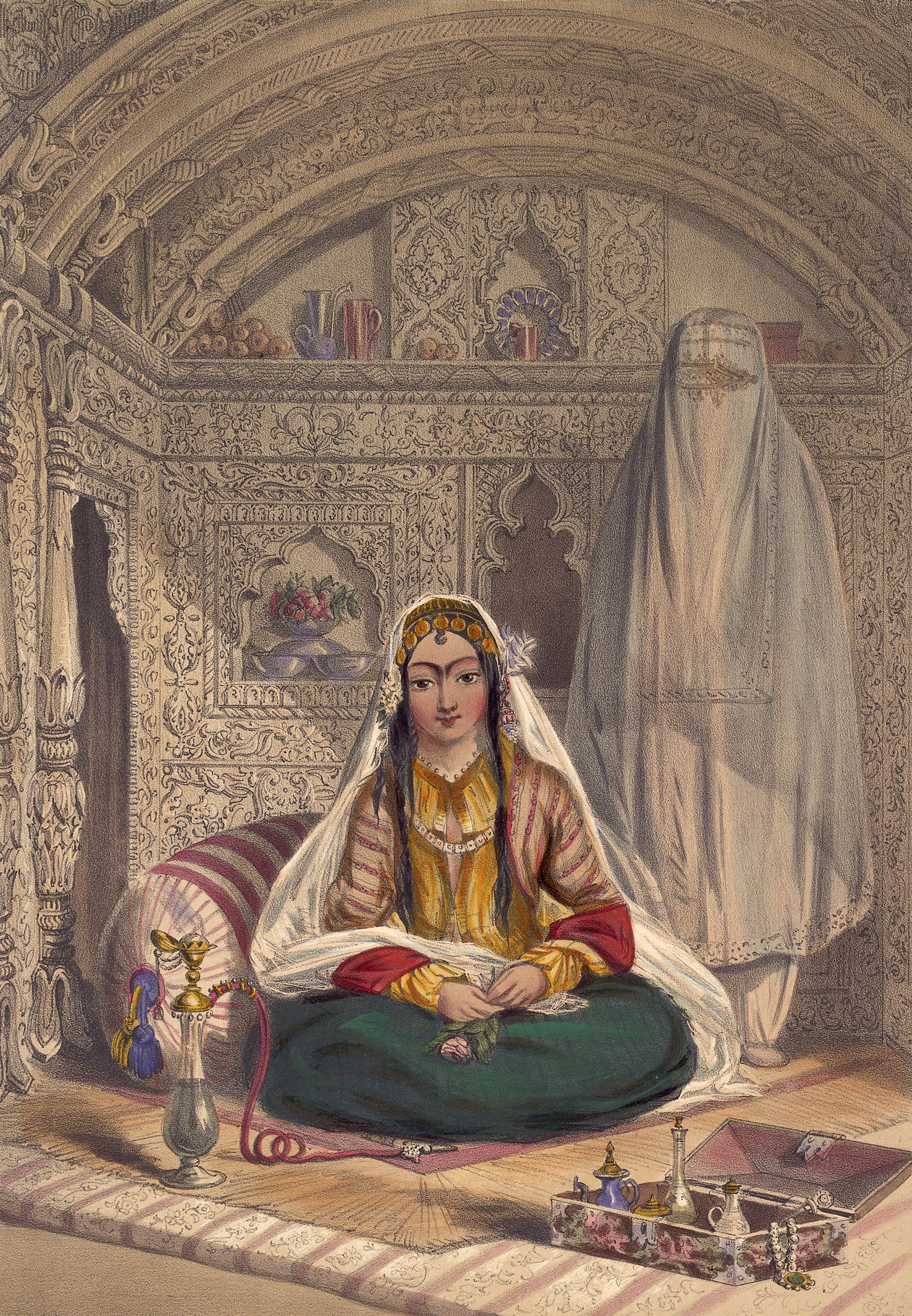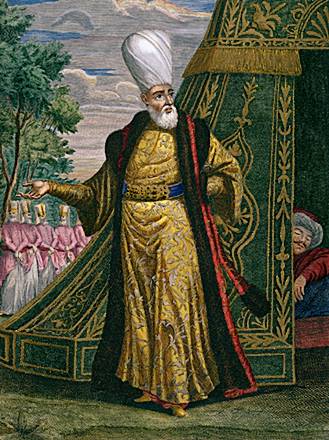|
New Mosque, Istanbul
The New Mosque (, , originally named the Valide Sultan Mosque, ) and later New Valide Sultan Mosque () after its partial reconstruction and completion between 1660 and 1665, is an Ottoman imperial mosque located in the Eminönü quarter of Istanbul, Turkey. It is situated on the Golden Horn, at the southern end of the Galata Bridge, and is a notable Istanbul landmark marking the crossing from the old historic core of the city to the Beyoğlu (Pera) district. The mosque is a notable example of the Sultanate of Women period in Ottoman Empire. History Valide Sultan Mosque The construction of the mosque began in 1597. It was ordered by Safiye Sultan, who was the wife of Sultan Murad III and later Valide Sultan (Queen Mother) of Sultan Mehmed III. She ordered the mosque in her capacity as ''Valide Sultan'', two years after Mehmed III's ascension to the Ottoman throne in 1595, hence the original formal name "Valide Sultan Mosque". The original architect was Davut Ağa, an appren ... [...More Info...] [...Related Items...] OR: [Wikipedia] [Google] [Baidu] |
Üsküdar
Üsküdar () is a municipality and district of Istanbul Province, Turkey. Its area is 35 km2, and its population is 524,452 (2022). It is a large and densely populated district on the Anatolian (Asian) shore of the Bosphorus. It is bordered to the north by Beykoz, to the east by Ümraniye, to the southeast by Ataşehir and to the south by Kadıköy; with Karaköy, Kabataş, Beşiktaş, and the historic Sarayburnu quarter of Fatih facing it on the opposite shore to the west. Üsküdar has been a conservative cultural center of the Anatolian side of Istanbul since Ottoman times with its landmark as well as numerous tiny mosques and dergahs. Üsküdar is a major transport hub, with ferries to Eminönü, Karaköy, Kabataş, Beşiktaş and some of the Bosphorus suburbs. Üsküdar is a stop on the Marmaray rail service at the point where it starts its journey under the Bosphorus, re-emerging on the European side at Sirkeci. Via Marmaray, Üsküdar is linked to Gebz ... [...More Info...] [...Related Items...] OR: [Wikipedia] [Google] [Baidu] |
Safiye Sultan (wife Of Murad III)
Safiye Sultan (; 1550 – ''post'' 1619) was the Haseki Sultan of the Ottoman Sultan Murad III and Valide Sultan as the mother of Mehmed III. Safiye was one of the eminent figures during the era known as the Sultanate of Women. She lived in the Ottoman Empire as a courtier during the reigns of at least seven sultans: Suleiman the Magnificent, Selim II, Murad III, Mehmed III, Ahmed I, Mustafa I and Osman II. After the death of Selim II in 1574, Murad took the throne as the new sultan in Constantinople. Safiye was by his side and moved with him to Topkapi Palace; less than a year into his reign she received the title of Haseki Sultan and was given a higher rank than the sultan's own sisters, Şah Sultan (daughter of Selim II), Şah Sultan, Gevherhan Sultan (daughter of Selim II), Gevherhan Sultan, Ismihan Sultan and Fatma Sultan (daughter of Selim II), Fatma Sultan. Nurbanu Sultan, Murad's mother, was upset with Safiye's influence on Murad, and wanted to replace her with another ... [...More Info...] [...Related Items...] OR: [Wikipedia] [Google] [Baidu] |
Külliye
A külliye () is a complex of buildings associated with Turkish architecture centered on a mosque and managed within a single institution, often based on a waqf (charitable foundation) and composed of a madrasa, a Dar al-Shifa (clinic), kitchens, bakery, hammam, other buildings for various charitable services for the community and further annexes. The tradition of külliye is particularly marked in Turkish architecture, starting in Anatolian Seljuk architecture, Seljuq, then especially in Ottoman architecture, Ottoman, and also in Timurid architecture, Timurid architectural legacies., pages 200–205 The word is derived from Turkish , meaning "complete". History The külliye concept is based on the earliest form of the mosque. The mosque was not only used as a house of praying but also as a place for eating, teaching and as a hostel for the poor. The structure of the külliye derived from such concept. Instead of using one mosque for various services, other buildings were built ... [...More Info...] [...Related Items...] OR: [Wikipedia] [Google] [Baidu] |
Spice Bazaar, Istanbul
The Spice Bazaar (, meaning "Egyptian Bazaar") in Istanbul, Turkey, is one of the largest bazaars in the city. Located in the Eminönü quarter of the Fatih district, it is the most famous covered shopping complex after the Grand Bazaar. History There are several documents suggesting that the name of the bazaar was first "New Bazaar". Then it got its name "Egyptian Bazaar" () because it was built with the revenues from the Ottoman eyalet of Egypt in 1660. John Freely:The Companion Guide to Istanbul (2000) The word ''mısır'' has a double meaning in Turkish: "Egypt" and "maize". This is why sometimes the name is wrongly translated as "Corn Bazaar". The bazaar was (and still is) the center for spice trade in Istanbul, but in recent years shops of other types are gradually replacing the sellers of spices. The building itself is part of the ''külliye'' (complex) of the New Mosque. The revenues obtained from the rented shops inside the bazaar building were used for the upkeeping ... [...More Info...] [...Related Items...] OR: [Wikipedia] [Google] [Baidu] |
Great Fire Of 1660
Two-thirds of Constantinople (now Istanbul) were destroyed in the Great Fire of 1660. The chronicler Abdi Paşa estimated that the fire destroyed 280,000 houses and burned for approximately forty-nine hours. During the reconstruction of the city, the Ottomans enacted unprecedented policies concerning Christian and Jewish houses of worship. In previous periods, the Ottomans had usually allowed the rebuilding of churches and synagogues. However, in this period they did not. Background On July 24, 1660, a great fire broke out in Constantinople, destroying two-thirds of the city. Contemporary sources report that thousands of homes were engulfed in the blaze. The fire began west of Eminönü and consumed densely populated neighborhoods filled with old-fashioned wooden houses. Abdi Paşa described the fire as having "marched across the city like an invading army." Contemporary sources estimate that 280,000 homes were destroyed and 40,000 lives were lost in the conflagration. The fire ... [...More Info...] [...Related Items...] OR: [Wikipedia] [Google] [Baidu] |
Harem
A harem is a domestic space that is reserved for the women of the house in a Muslim family. A harem may house a man's wife or wives, their pre-pubescent male children, unmarried daughters, female domestic Domestic worker, servants, and other unmarried female relatives. In the past, during the history of slavery in the Muslim world, era of slavery in the Muslim world, harems also housed enslaved Concubinage in Islam, concubines. In former times, some harems were guarded by eunuchs who were allowed inside. The structure of the harem and the extent of monogamy or polygyny have varied depending on the family's personalities, socio-economic status, and local customs. Similar institutions have been common in other Mediterranean Basin, Mediterranean and Middle Eastern civilizations, especially among royal and upper-class families, and the term is sometimes used in other contexts. In traditional Persian residential architecture, the women's quarters were known as (), and in the Indian s ... [...More Info...] [...Related Items...] OR: [Wikipedia] [Google] [Baidu] |
Ahmed I
Ahmed I ( '; ; 18 April 1590 – 22 November 1617) was the sultan of the Ottoman Empire from 1603 to 1617. Ahmed's reign is noteworthy for marking the first breach in the Ottoman tradition of royal fratricide; henceforth, Ottoman rulers would no longer systematically execute their brothers upon accession to the throne. He is also well known for his construction of the Blue Mosque, one of the most famous mosques in Turkey. Early life Ahmed was born at the Manisa Palace, Manisa, probably on 18 April 1590, when his father Mehmed was still a prince and the governor of the Sanjak of Manisa. His mother was Handan Sultan. After his grandfather Murad III's death in 1595, his father came to Constantinople and ascended the throne as Sultan Mehmed III. Mehmed ordered the execution of his nineteen half brothers. Ahmed's elder brother Şehzade Mahmud was also executed by his father Mehmed on 7 June 1603, just before Mehmed's own death on 22 December 1603. Mahmud was buried along with hi ... [...More Info...] [...Related Items...] OR: [Wikipedia] [Google] [Baidu] |
Janissaries
A janissary (, , ) was a member of the elite infantry units that formed the Ottoman sultan's household troops. They were the first modern standing army, and perhaps the first infantry force in the world to be equipped with firearms, adopted during the reign of Murad II (r. 1421–1444, 1446–1451). The corps was established under either Orhan or Murad I, and dismantled by Mahmud II in 1826. Janissaries began as elite corps made up through the '' devşirme'' system of child levy enslavement, by which indigenous European Christian boys, chiefly from the Balkans, were taken, levied, subjected to forced circumcision and forced conversion to Islam, and incorporated into the Ottoman army. They became famed for internal cohesion cemented by strict discipline and order. Unlike typical slaves, they were paid regular salaries. Forbidden to marry before the age of 40 or engage in trade, their complete loyalty to the Ottoman sultan was expected. By the 17th century, due to a drama ... [...More Info...] [...Related Items...] OR: [Wikipedia] [Google] [Baidu] |
Turhan Sultan
Hatice Turhan Sultan (, "''merciful"'' or "''noble''"; 1627 – 4 August 1683) was the first Haseki sultan of the Ottoman sultan Ibrahim (), and Valide sultan as the mother of Mehmed IV () as well as the Official Regent of the Ottoman Empire, reigning from 1651 to 1656. Turhan was prominent for the regency of her young son and her building patronage. She and Kösem Sultan are the only two women in Ottoman history to be regarded as official regents and had supreme control over the Ottoman Empire. As a result, Turhan became one of the prominent figures during the era known as Sultanate of Women. Name Filiz Karaca, the author of the article about Turhan in the Islamic Encyclopedia, noted that although it was stated that Kösem Sultan gave her the name Hatice Turhan, the Ottoman historian and contemporary of Turhan Uşşakızade Ibrahim Efendi wrote that she was first given the name Turhan/Tarhan () and only then Hatice. Karaca also noted that in older sources she was called ... [...More Info...] [...Related Items...] OR: [Wikipedia] [Google] [Baidu] |
Mimar Sinan
Mimar Sinan (; , ; – 17 July 1588) also known as Koca Mi'mâr Sinân Âğâ, ("Sinan Agha (title), Agha the Grand Architect" or "Grand Sinan") was the chief Ottoman Empire, Ottoman architect, engineer and mathematician for sultans Suleiman the Magnificent, Selim II and Murad III. He was responsible for the construction of more than 300 major structures, including the Selimiye Mosque, Edirne, Selimiye Mosque in Edirne, the Kanuni Sultan Suleiman bridge (Istanbul), Kanuni Sultan Suleiman Bridge in Büyükçekmece, and the Mehmed Paša Sokolović Bridge in Višegrad, as well as other more modest projects such as madrasa's, külliyes, and bridges. His apprentices would later design the Sultan Ahmed Mosque in Istanbul and the Stari Most bridge in Mostar. The son of a stonemason, he received a technical education and became a military engineer. He rose rapidly through the ranks to become first an officer and finally a Janissary commander, with the honorific title of Sinan.Goodwin ... [...More Info...] [...Related Items...] OR: [Wikipedia] [Google] [Baidu] |
Davut Ağa
Davud Agha was the chief imperial architect of the Ottoman Empire from 1588, after the death of his predecessor Mimar Sinan, Sinan, until his death in 1598 or 1599. His works include various monuments from the Classical Ottoman architecture, classical period of Ottoman architecture. Career Davud Agha was probably recruited through the ''devshirme'' system circa 1562 and from there followed a typical path into the Ottoman bureaucracy, studying architecture under the master architect Sinan. He probably participated as a Military engineering, military engineer in the Ottoman–Safavid War (1578–1590), Ottoman campaign against the Safavids in 1583. He was a protegé of the Chief Black Eunuch, Mehmed Agha or Mehmet bin Abdurrahman. Under the latter's supervision, he may have been responsible for a late expansion of the Atik Valide Mosque in Üsküdar (previously designed by Sinan) between 1584 and 1586. The earliest work clearly attributed to him was in the Topkapı Palace in 1585, ... [...More Info...] [...Related Items...] OR: [Wikipedia] [Google] [Baidu] |
Mehmed III
Mehmed III (, ''Meḥmed-i sālis''; ; 26 May 1566 – 22 December 1603) was the sultan of the Ottoman Empire from 1595 until his death in 1603. Mehmed was known for ordering the execution of his brothers and leading the army in the Long Turkish War, during which the Ottoman army was victorious at the decisive Battle of Keresztes. This victory was however undermined by some military losses such as in Győr and Nikopol. He also ordered the successful quelling of the Jelali rebellions. The sultan also communicated with the court of Elizabeth I on the grounds of stronger commercial relations and in the hopes of England to ally with the Ottomans against the Spanish. Early life Mehmed was born at the Manisa Palace on 26 May 1566, during the reign of his great-grandfather, Suleiman the Magnificent. He was the son of Murad III, himself the son of Selim II, who was the son of Sultan Suleiman and Hurrem Sultan. His mother was Safiye Sultan, an Albanian from the Dukagjin Highlan ... [...More Info...] [...Related Items...] OR: [Wikipedia] [Google] [Baidu] |








